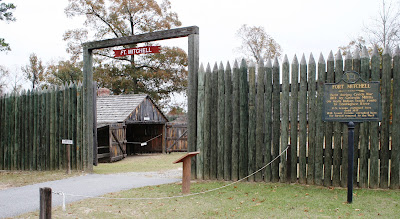 |
| Riverfront Mills, Columbus Georgia |
These studies are conducted to determine the potential for regions of the country to share nationally significant stories about their local history, historic places, and distinctive cultural landscapes.
There are over 49 National Heritage Areas in the United States and they all have a special story to tell, contributing to the unique mosaic that is our national heritage.
Recently, I had the opportunity to work with a study of the Chattahoochee
Trace region. This area runs between the
boarder of Georgia and Alabama, where the Chattahoochee River flows over the Piedmont’s fall line, eventually
draining into the Gulf of Mexico. Lining the banks of the river are remnants of the southern textile industry where hydroelectric
cotton mills once formed the backbone of many small rural communities.
 |
| Statue of Marquis de Lafayette LaGrange, Georgia |
 |
| Eufaula, Alabama |
These massive structures are hard to miss, but just below the surface lies a richer heritage.
 |
| Fort Mitchell, Alabama Starting Point of the Creek Trail of Tears |
Caught in the middle of this global conflict were the Native American tribes that called the Chattahoochee Trace home. With the independence of the American colonies in 1776, settlers flooded into the region. This led to bloody conflicts with the Creek Nations and other Native American tribes. The first Creek Wars boiled over into the War of 1812 and resulted in the forced removal of many tribes to the Oklahoma Territory.
One of the goals of this National Heritage Area Feasibility
study was to engage with many of the Creek Nation tribes for a better understanding of their connections to this area and its heritage. Although many of these tribes are now in
Oklahoma, they still maintain strong ties to their ancestral
homeland along the Chattahoochee River.
A special thank you to the Cultural Resource Management
Division at Fort Benning for allowing us to be a part of their bi-annual tribal
consultation meetings. Hopefully this
study will open a door to a fuller understanding of what National Heritage
truly means.
 |
| Creek Trail of Tears Monument Chattahoochee Indian Heritage Center |
No comments:
Post a Comment